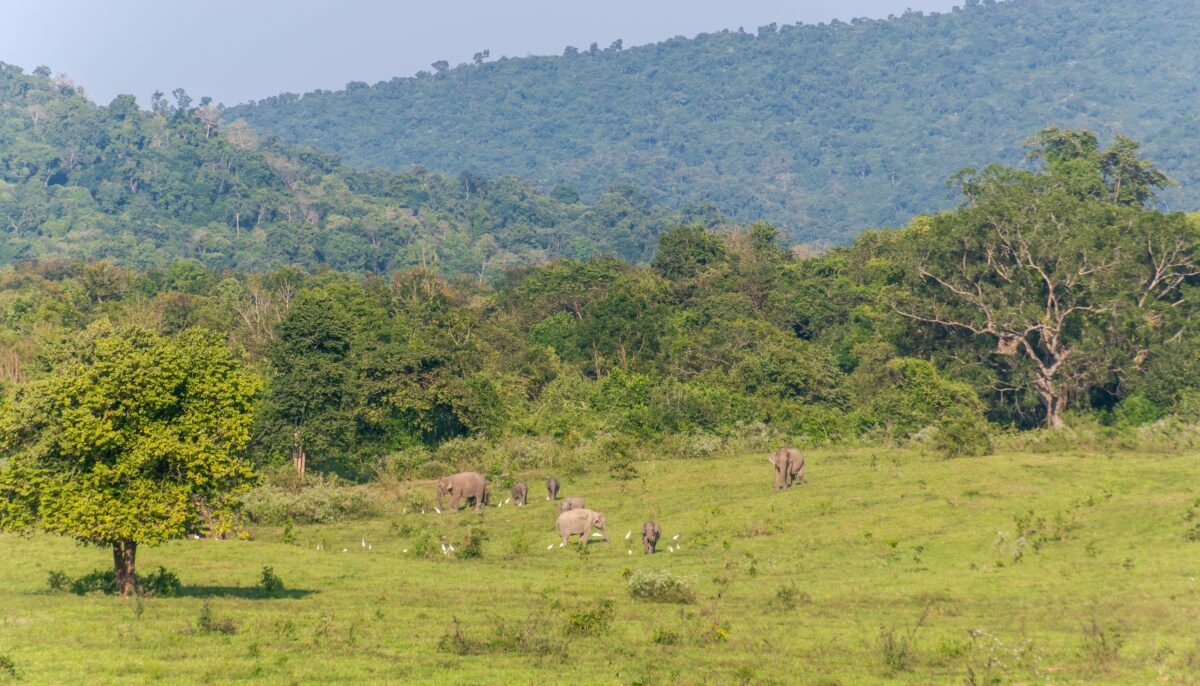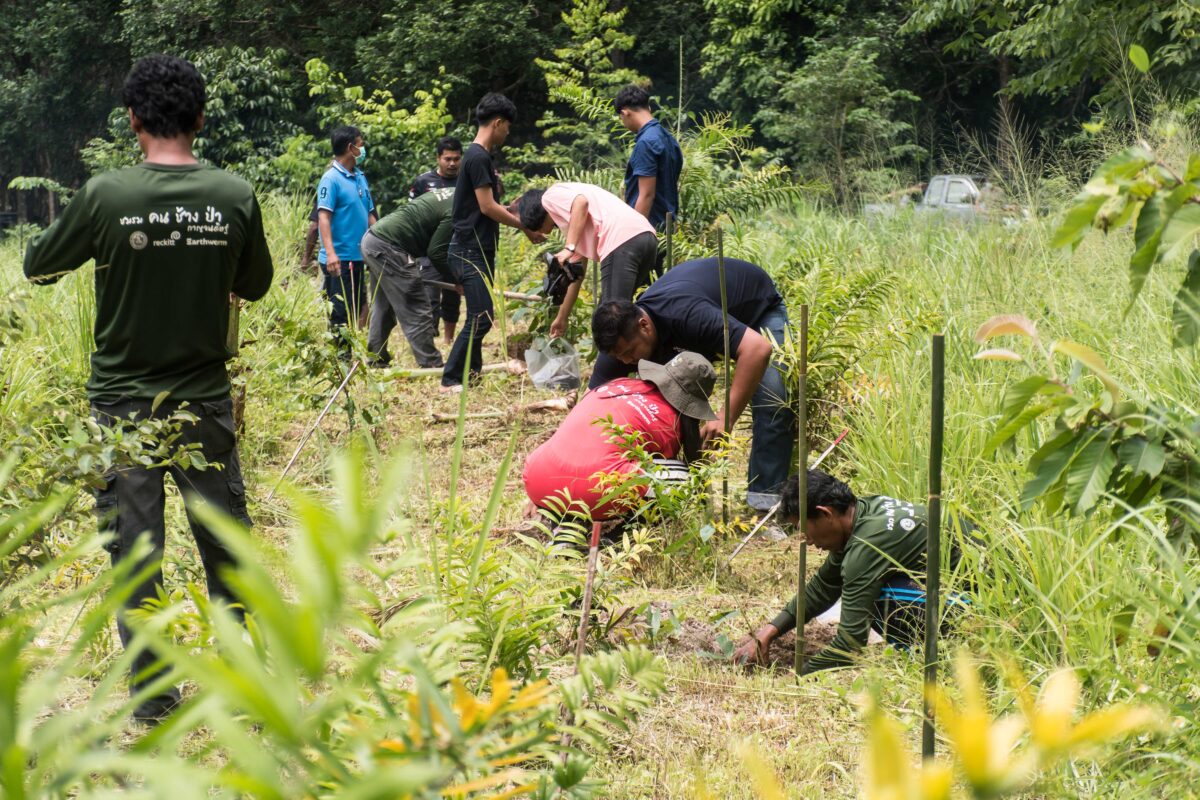Surat Thani, a province in southern Thailand, is a hub for sustainable rubber production with a lush landscape and a unique challenge – finding a way for humans and elephants to live together. Elephants, which have lived in this region for centuries, sometimes clash with villagers, leading to a complex problem called the Human-Elephant Conflict (HEC).
The latest in a series of elephant deaths occurred when two wild elephants were electrocuted on a stretch of road in Tai Rom Yen National Park, victims of the rapid growth of agriculture, in particular, the "durian boom", a tropical fruit prized for its unique flavour. Low natural rubber prices and ever-increasing demand for durians, particularly in China, are prompting smallholder rubber farmers in Surat Thani to convert their plantations and install electric fences not previously used for farming.
Operating in Surat Thani for almost 8 years, the Earthworm Foundation works with various stakeholders to find creative solutions to promote harmony between humans and elephants in the region, including Reckitt, a global health, hygiene, and nutrition company. Natural rubber is a key raw material in Reckitt's Durex condom brand. With Reckitt's support, Earthworm's rurality program has helped more than 1,000 small-scale rubber farmers and tappers have more sustainable livelihoods through better agricultural practices, diversified incomes, and the Rubber Authority of Thailand, among others. Earthworm's program includes various activities and interventions, including regenerative agriculture, alternative livelihoods, and ecosystem restoration.
The conflict between humans and elephants concerns competition for space and resources. As human populations grow, elephant habitats are shrinking, pushing these giant animals into agricultural areas for food. This often results in damaged crops, financial losses, and, sadly, even fatalities. When people try to protect their livelihoods, they may end up harming or even killing elephants, which are already under threat.
Description of video x y z
The latest in a series of elephant deaths occurred when two wild elephants were electrocuted on a stretch of road in Tai Rom Yen National Park, victims of the rapid growth of agriculture, in particular, the "durian boom", a tropical fruit prized for its unique flavour. Low natural rubber prices and ever-increasing demand for durians, particularly in China, are prompting smallholder rubber farmers in Surat Thani to convert their plantations and install electric fences not previously used for farming.
Operating in Surat Thani for almost 8 years, the Earthworm Foundation works with various stakeholders to find creative solutions to promote harmony between humans and elephants in the region, including Reckitt, a global health, hygiene, and nutrition company. Natural rubber is a key raw material in Reckitt's Durex condom brand. With Reckitt's support, Earthworm's rurality program has helped more than 1,000 small-scale rubber farmers and tappers have more sustainable livelihoods through better agricultural practices, diversified incomes, and the Rubber Authority of Thailand, among others. Earthworm's program includes various activities and interventions, including regenerative agriculture, alternative livelihoods, and ecosystem restoration.
The conflict between humans and elephants concerns competition for space and resources. As human populations grow, elephant habitats are shrinking, pushing these giant animals into agricultural areas for food. This often results in damaged crops, financial losses, and, sadly, even fatalities. When people try to protect their livelihoods, they may end up harming or even killing elephants, which are already under threat.

The HEC in Surat Thani is a big issue for local communities. Farmers suffer the most from crop damage, which can ruin their livelihoods and push them into poverty. The constant fear of elephants getting too close to their homes and endangering their families causes much stress and anxiety among residents.
Additionally, the loss of natural resources and the fragility of elephant habitats threaten the long-term survival of these amazing creatures. According to Mr. Kriangsak Sribuarod, Head of Klongsang Wildlife Research Station of Surat Thani, the situation calls for in-depth discussion and understanding between the various partners, including the government, the private sector, and villagers regarding the transformation of land use affecting elephant habitat.
"In the past, this land was covered in rubber plantations, but when rubber prices dropped, people switched to growing fruits and palm trees. Elephants noticed these new palms and bananas and assumed it was an open territory, so they moved in, either settling there or raiding agricultural crops for food. This shift in farming has led to an even higher share of water drawn from the forest, causing seasonal water scarcity for elephants. So, when elephants search for water and food, they settle outside the forest boundaries instead of returning."
- Human-Elephant-Forest Club: Volunteers, often smallholder farmers, carry out routine nighttime patrols to reduce human-elephant conflicts and damage, including establishing food sources for wild elephants, tracking their pathways, and educating communities to foster coexistence. They also engage in habitat restoration, early warning systems, and advocacy for elephant conservation.
- Early Warning Systems: Advanced technology, such as camera traps, predicts and monitors elephant movements. Early warning systems notify communities about approaching elephants, giving them time to take preventive measures and avoid conflicts.
- Community Education: Raising awareness about elephant behaviour and conservation is crucial. Educational programs in schools and communities promote understanding and empathy toward elephants, making people more likely to support conservation efforts.
- Protected Corridors: Efforts are underway to create safe paths for elephants that connect their fragmented habitats, allowing them to move freely and reducing the need to venture into human settlements in search of food and water.

Tragically, following the elephant fatalities, one volunteer patrol club tasked with protecting their local community faced a devastating incident when an encounter with a wild elephant incursion turned fatal. This heartbreaking event is a stark reminder of the urgent need to address this conflict and find safer ways for humans and elephants to share their habitat. Realising the need for a fair approach, several organisations, government agencies, and local communities have joined forces to develop creative strategies that encourage peaceful living between humans and elephants in Surat Thani.
Achieving harmony between humans and elephants in Surat Thani requires a multifaceted approach, combining conservation efforts, community engagement, and technical solutions. Earthworm Foundation remains committed to supporting initiatives that consider the needs of both elephants and human communities.
Mr. Pakinai Noppakun, vice-president of the Man-Elephant-Forest Club in Kanchanadit district, stresses the need for coexistence:
"I'd like to appeal to the villagers to be open-minded. If we can avoid conflicts, we can all live peacefully. The same goes for the elephants—they won't come down here if they have sufficient food in their territory. So, if your farm hasn't suffered much damage, please don't harm them."
The conflict between humans and elephants in Surat Thani is a smaller version of a more significant challenge: How can we co-exist peacefully with nature?
Earthworm Foundation is making significant progress by trying out innovative solutions and understanding elephants and the communities better to develop a transformational work plan for the landscape approach in the next few months that could be sustained and improve the process of cohabitation between humans and elephants. These efforts will serve as an example to other regions facing similar challenges and pave the way for a more balanced and sustainable future for all.


